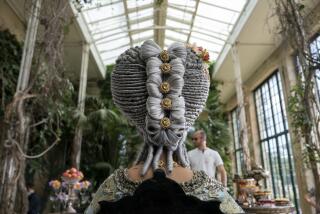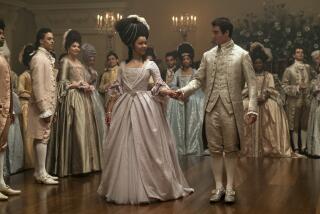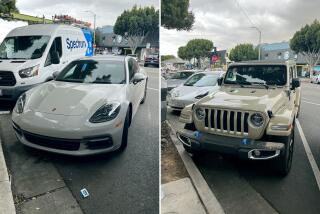The News About Hues : Two-Tone and Multicolor Highlights Brighten the Year of ‘the Rich Brunette’
- Share via
PICTURE A WOMAN with a bold geometric hair style parted on the left side, her hair the color of dark mahogany. Now, picture the same woman seconds later, hair parted on the right, with gold highlights in her brown locks. That’s the hair-color story in London this season: two tones.
A variation on a larger, international trend toward multiple hair shades, this new look sounds stranger than it really is. Unlike the recent fad of obviously dyed hair, the new coloring approach is designed to resemble natural colorations in human hair. The technique is an adaptation of traditional highlighting, but instead of being woven throughout the whole mane, the shades are carefully placed to allow for different looks. The dyed shades can be camouflaged or exposed simply by changing the way the hair is combed.
“Our research shows that many people don’t want the commitment--or risk--of a whole head of permanent hair color, particularly if they’ve had no prior color treatments,” says London-based Annie Humphreys, co-owner and director of Vidal Sassoon salons. Humphreys devised the new technique.
Ed Perruzzi, director of education for Clairol Professional in New York, says color experiments have characterized London hairdressing since the ‘60s. “Americans and the French are more interested in natural-looking color and less contrast--especially today,” he says. But American colorists are using more shades on the same head than ever before, Perruzzi says. “They’re just doing it in a much more subtle way than the British.”
Beverly Hills hairdresser Soonie Paik, co-owner of the Bruno & Soonie salon, says she often uses as many as four different colors on a client’s hair. “Color used to be very obvious, but now it is toned down and subtle,” Paik explains. Now, she says, multiple shades duplicate the look of hair naturally bleached by the sun. She and her partner, Bruno Meglio, use red tones to add dimension to brunette hair, often lightening the ends, darkening the roots and adding mid-tones in between. “We never use contrasting tones, such as black with red or blond with orange,” Meglio says. “Women here want their hair to be natural looking.”
In New York, Beth Minardi of Minardi Minardi Imagemakers says mid-range colors have replaced the vivid reds and blonds that were popular a few years ago. “ ‘Better’ this year means warmer reds, shinier, richer brunettes and muted, sandy blonds,” Minardi says. Clairol’s Perruzzi adds that “although the bulk of America is still infatuated with blond hair, the most elegant look this year is a rich brunette.” He credits Italian hairdressers with making brown hair more desirable. “But this year, even brown hair has to have dimension, and that comes from using many colors on the same head.”
In addition to being trendy, the multicolor approach may also be another way to woo clients into the salon. These complex techniques, which can cost between $35 and $125, require a professional’s skill. But even for women who are used to do-it-yourself hair color, the natural-looking results of the new technique may justify its cost and turn this trend into a classic.
Makeup and hair: Brad Bowman / Cloutier; model: Erin Payne / Elite; stylist: Jodi Rappaport.






